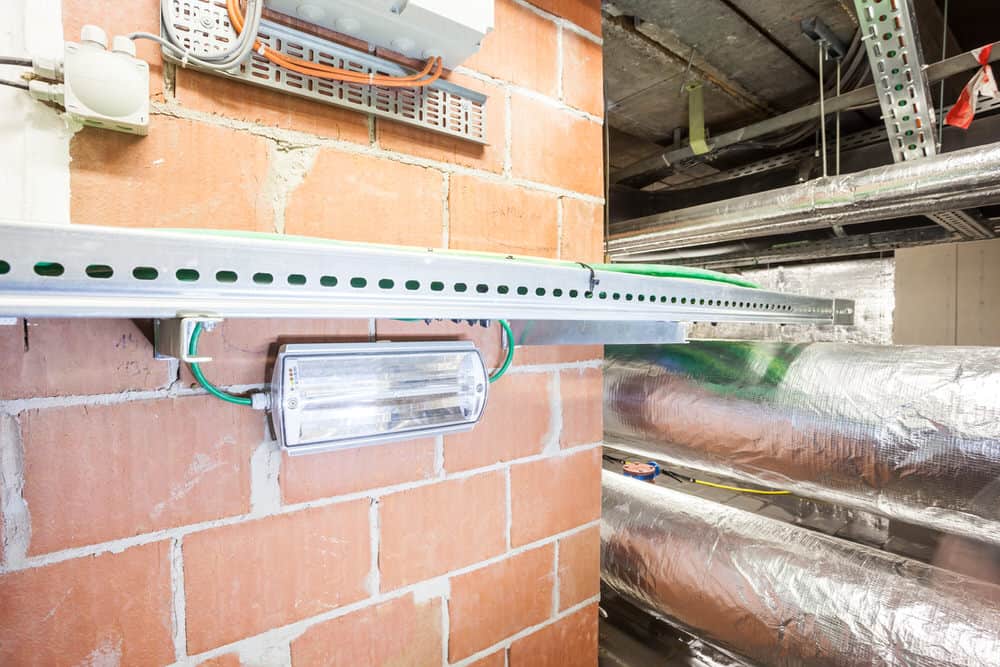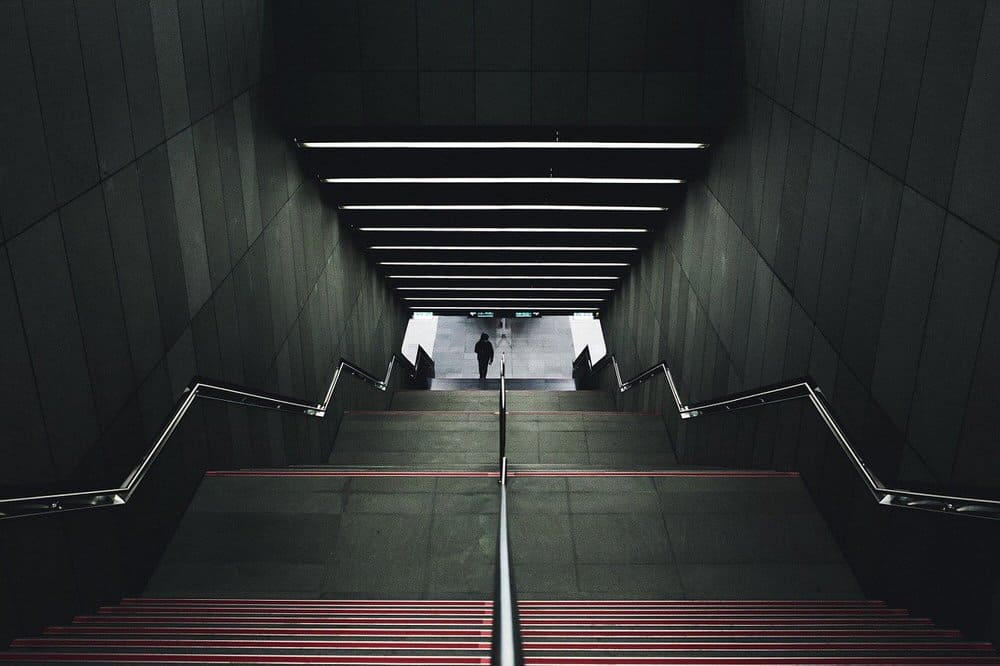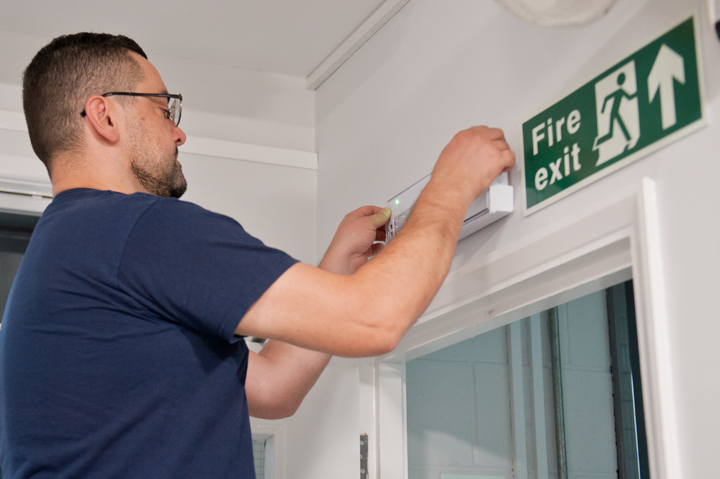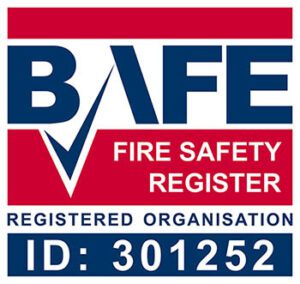
In this simple guide we explain the UK’s current emergency lighting regulations and how they affect your business in 2024 and beyond.
Emergency lighting is lighting that kicks in when there is a mains supply failure. It is a failsafe measure to ensure continued on-site safety and protect the occupants of a building.
Under the Regulatory Reform (Fire Safety) Order 2005, businesses must install emergency lighting in their premises by law.
BS EN 1838 specifies escape and standby lighting requirements for businesses in the event of a power failure.
What is emergency lighting used for?
Emergency lighting illuminates areas that lead occupants to the nearest fire exit. In an outage, the lights should remain on for between one and three hours.
This is to ensure that all occupants of the building can safely make their way to the exit and attending emergency services can access the building safely if necessary.
Then, once power is restored to the building, the lights should recharge.
What are the different types?
There are four different types of emergency lighting. These include:
- Escape route lighting: Exit route lighting is a type of lighting that illuminates routes to fire escapes and emergency exits and helps occupants avoid occupants as they leave the building.
- Open area emergency lighting: This type of emergency lighting is sometimes called “anti-panic” lighting and assists occupants when trying to find an escape from a building. Organisations install these lights in open areas to provide enough light to be able to escape safely in the event of an emergency or fire.
- High-risk task area lighting: Some workspaces play host to extremely high-risk tasks (such as working with tools or operating machinery). High-risk task area lighting needs to operate in the event of an emergency to keep them illuminated long enough for workers to cease working, switch machinery or cookers off, put down tools, and move to safety.
- Standby lighting: This type of lighting kicks in when the power goes out. But unlike the other types of emergency lighting, the law does not require it. Usually, power comes from a diesel generator and keeps the lights on until technicians restore mains power.
Why are emergency lights provided? Why are they important?
Emergency lighting is vital for fire safety reasons. When the lights in a building go out, it can lead to panic which leads to worse outcomes for the occupants of a building.
People need clear paths to exits and plenty of light to help them avoid obstacles in an emergency.
Where do you need to place emergency lighting?
Where you place your emergency lighting matters; incorrect siting can lead to significant risks.
You should place lighting and signs in such a way that clearly illuminates escape routes and exits from your premises.
Regulations state that you should use an illuminated sign instead of an emergency lighting luminaire when the final exit is not readily identifiable by occupants.
Businesses also need to ensure that they correctly illuminate problem areas. These could include:
- Stairwells
- Places where the floor level changes
- Toilet areas (greater than 8m2)
- Intersections in corridors
- Changes in the direction of the escape route
You don’t have to provide lights for every item in this list, but you should ensure that all areas receive sufficient lighting for people to navigate their way out of the building.
Most luminaire manufacturers specify how far apart you should place lighting to ensure optimal illumination on your premises.
Your fire risk assessment will detail areas in your building that you need to provide emergency lighting for.

How long does emergency lighting need to stay on for?
Emergency escape lighting needs to remain on for a minimum duration of three hours on premises that you cannot evacuate immediately, such as places where people sleep, like hotels.
Minimum illumination falls to one hour in situations where you can evacuate the premises rapidly and don’t need to re-occupy the premises quickly.
Organisations should test their lights annually for the full test duration to ensure that they can provide emergency lighting for the required period. If they cannot, then the backup battery requires replacement.
How are emergency lighting systems powered?
There are two ways in which you can power emergency lighting systems:
- Self-contained or single point power source.
- Central battery source
The main advantage of self-contained or single point power sources is that installation is cheaper and faster, and there are no additional hardware requirements or emergency lighting wiring.
Limited battery life is the main downside, and local conditions, such as humidity, can also affect operation.
Central battery sources are more straightforward to test and maintain. However, they come with high capital costs.
How bright does emergency lighting need to be?
BS 5266 emergency lighting guidelines recommend varying illuminations, depending on the location of the lighting.
- Floor level: lighting of no less than one lux
- Anti-panic areas: lighting of no less than 0.5 lux
Please note that you should light escape routes less than 2 metres wide using one lux lighting.
You can consider routes of more than 2 metres wide as a series of two-metre strips, each with one lux lighting covering at least 50 per cent of their width.
As a guide of how bright a lux is, 1 lux is the approximate equivalent of 1 large domestic candle power, so emergency lighting doesn’t have to be particularly bright, just bright enough to find your way.
How is emergency lighting serviced and tested?
Organisations that fall under emergency lighting testing regulations need to follow a servicing schedule to ensure that it will perform correctly in the event of an emergency.
BS EN 50172 / BS 5266-8 discuss the minimum levels of testing provisions, depending on the type of site you operate. Businesses need to appoint a “responsible person” to oversee the schedule.
Organisations can conduct either manual or automatic tests. Manual tests involve physically cutting off the power supply to see whether systems operate as intended.
Automatic testing involves the use of self-testing emergency lightning, a special variety that will tell you if there’s a problem.

How often is it serviced and tested?
Testing falls into three categories:
Daily: Perform a visual inspection of central power supply indicators to ensure the system is operational (only applies to central battery systems)
Monthly: BS EN 50172 / BS 5266-8 dictate that organisations must test all emergency lighting systems monthly. Emergency lighting signage regulations require all luminaries and signs to illuminate and be clean and present.
The monthly test will be a quick ‘flick’ test just to ensure that the emergency lighting switches on correctly.
Annually: Annual tests need to check that lights remain on for the test duration recommended by the relevant British Standard. All lights need to continue functioning correctly at the end of the test. Those that don’t require replacement.
Wrapping up
If your business is grappling with emergency lighting regulations, then Surrey Fire & Safety Ltd can help. We provide consultations, showing you how you can better comply with the law and keep your staff safe.
Information about our emergency lighting services can be found at the links below:
Emergency Lighting Installation – Emergency Lighting Test & Servicing
We hope this guide has been useful to you but if you have any additional questions, please give our friendly team a call on 0800 157 1113 and they’ll be happy to help.
Alternatively, you can send us a contact request by clicking the button below.
Check out more of our fire safety guides below:



